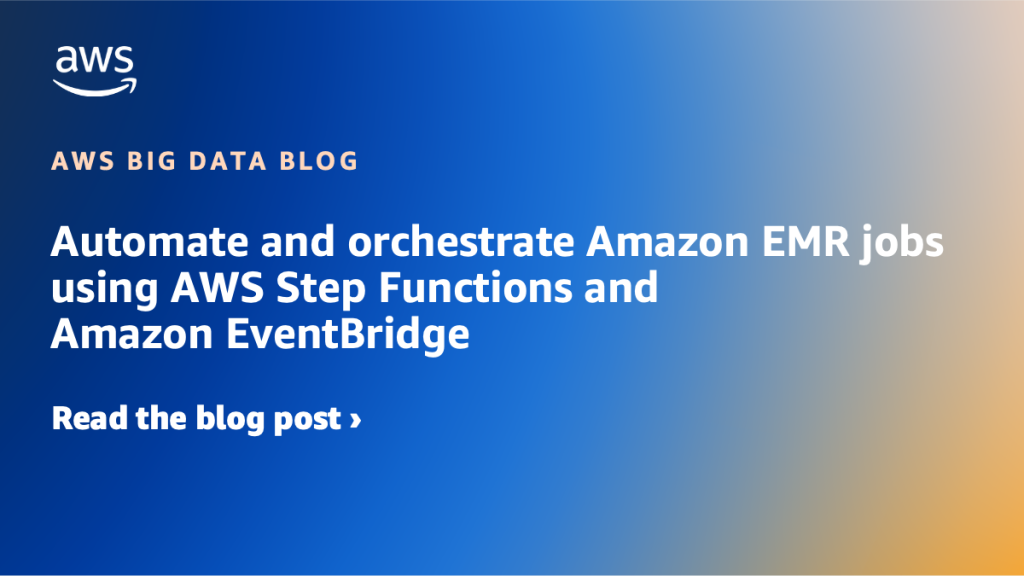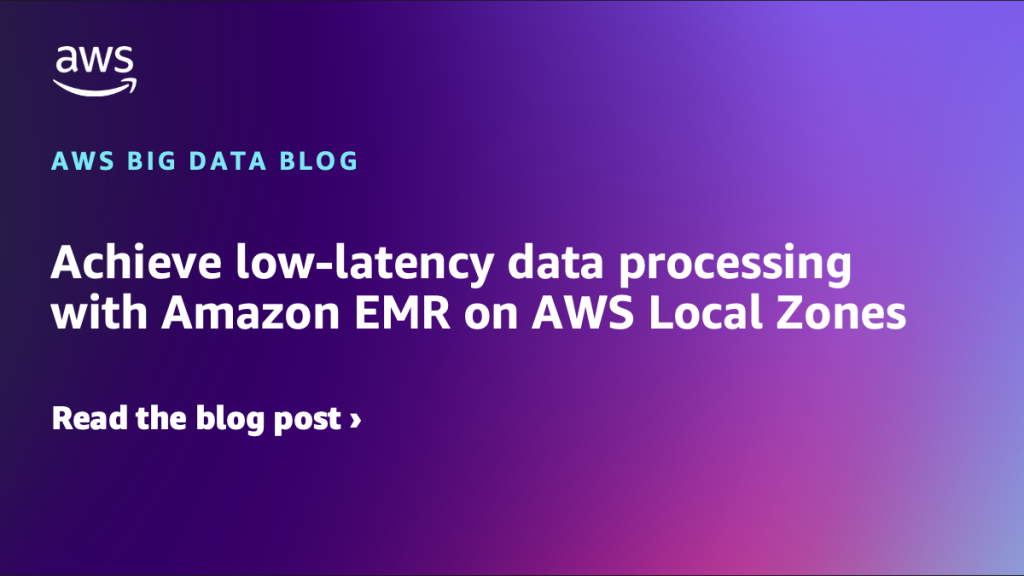AWS Big Data Blog
Category: Compute
Building a real-time ICU patient analytics pipeline with AWS Lambda event source mapping
In this post, we demonstrate how to build a serverless architecture that processes real-time ICU patient monitoring data using Lambda event source mapping for immediate alert generation and data aggregation, followed by persistent storage in Amazon S3 with an Iceberg catalog for comprehensive healthcare analytics.
Automate and orchestrate Amazon EMR jobs using AWS Step Functions and Amazon EventBridge
In this post, we discuss how to build a fully automated, scheduled Spark processing pipeline using Amazon EMR on EC2, orchestrated with Step Functions and triggered by EventBridge. We walk through how to deploy this solution using AWS CloudFormation, processes COVID-19 public dataset data in Amazon Simple Storage Service (Amazon S3), and store the aggregated results in Amazon S3.
Achieve low-latency data processing with Amazon EMR on AWS Local Zones
By deploying Amazon EMR on AWS Local Zones, organizations can achieve single-digit millisecond latency data processing for applications while maintaining data residency compliance. This post demonstrates how to use AWS Local Zones to deploy EMR clusters closer to your users, enabling millisecond-level response times.
Enhance Amazon EMR observability with automated incident mitigation using Amazon Bedrock and Amazon Managed Grafana
In this post, we demonstrate how to integrate real-time monitoring with AI-powered remediation suggestions, combining Amazon Managed Grafana for visualization, Amazon Bedrock for intelligent response recommendations, and AWS Systems Manager for automated remediation actions on Amazon Web Services (AWS).
Near real-time streaming analytics on protobuf with Amazon Redshift
In this post, we explore an end-to-end analytics workload for streaming protobuf data, by showcasing how to handle these data streams with Amazon Redshift Streaming Ingestion, deserializing and processing them using AWS Lambda functions, so that the incoming streams are immediately available for querying and analytical processing on Amazon Redshift.
Optimize traffic costs of Amazon MSK consumers on Amazon EKS with rack awareness
In this post, we walk you through a solution for implementing rack awareness in consumer applications that are dynamically deployed across multiple Availability Zones using Amazon EKS.
Improve RabbitMQ performance on Amazon MQ with AWS Graviton3-based M7g instances
Amazon MQ is a fully managed service for open-source message brokers such as RabbitMQ and Apache ActiveMQ. Today, we are announcing the availability of AWS Graviton3-based Rabbit MQ brokers on Amazon MQ, which runs on Amazon EC2 M7g instances. AWS Graviton processors are custom designed server processors developed by AWS to provide the best price performance for cloud workloads running on Amazon EC2.
Building serverless event streaming applications with Amazon MSK and AWS Lambda
In this post, we describe how you can simplify your event-driven application architecture using AWS Lambda with Amazon MSK. We demonstrate how to configure Lambda as a consumer for Kafka topics, including a cross-account setup and how to optimize price and performance for these applications.
Build a multi-Region analytics solution with Amazon Redshift, Amazon S3, and Amazon QuickSight
This post explores how to effectively architect a solution that addresses this specific challenge: enabling comprehensive analytics capabilities for global teams while making sure that your data remains in the AWS Regions required by your compliance framework. We use a variety of AWS services, including Amazon Redshift, Amazon Simple Storage Service (Amazon S3), and Amazon QuickSight.
PackScan: Building real-time sort center analytics with AWS Services
In this post, we explore how PackScan uses Amazon cloud-based services to drive real-time visibility, improve logistics efficiency, and support the seamless movement of packages across Amazon’s Middle Mile network.









